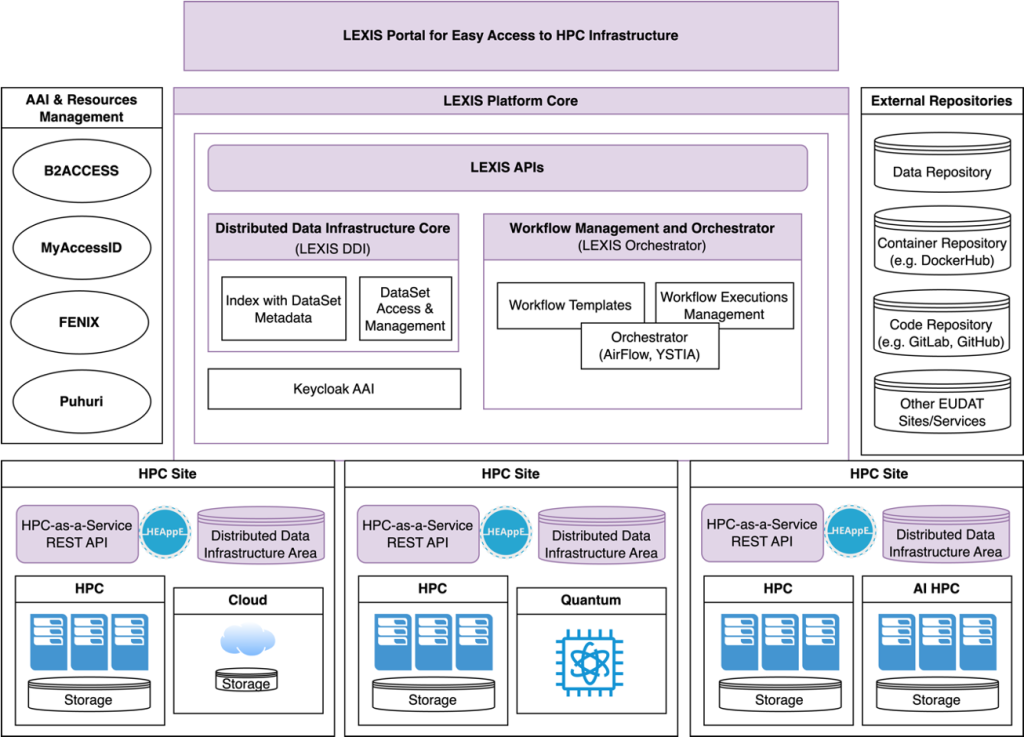The LEXIS platform enables easy access to distributed High-Performance-Computing (HPC) and Cloud-Computing infrastructure for science, SMEs and industry. It enables automatised workflows across Cloud and HPC systems, on site or across different European supercomputing centres.
Below, we show the main features, concepts and components of LEXIS:
• Platform architecture for easy access and automatised data-driven workflows
* HPC-as-a-Service approach
* Embedding of HPC and Cloud-Computing systems
* LEXIS Platform Core vs. LEXIS Platform Node features
• Management of complex, mixed Cloud-Computing/HPC workflows
* Workflow orchestration
* Platform Management Core – user identity and access management
• Automated big data management within workflows
* Data upload and download
* Distributed Data Infrastructure, staging and connectivity
* EUDAT features, FAIR data
* Data safety and security
The last sections of this page layout the platform concept as seen by the user, with pointers to our actual user interfaces.

The LEXIS Platform federates Supercomputing centres (HPC Sites, lower part of figure) and makes them accessible via a platform core (upper, central part) managing data and workflows. A REST-API based architecture connects this to the LEXIS Portal (topmost part). For low-threshold integration into the European HPC and Cloud-Computing landscape, several identity providers / management systems (upper/left part) can be used with LEXIS. Data are easily exchanged with relevant local object storages and remote repositories.